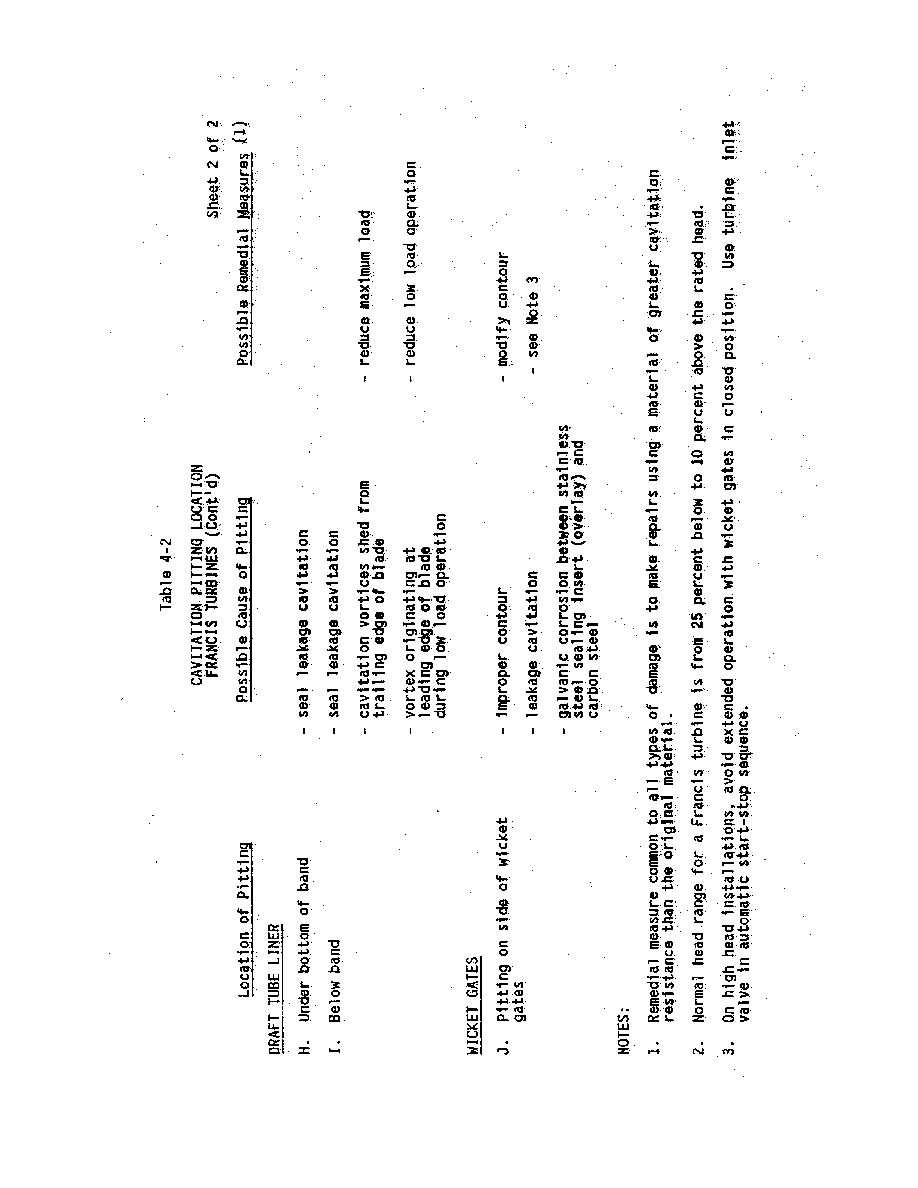

contamination of the material surface during the manufacturing process. For
salt water application, a higher chromium content martensitic stainless steel
(16-5) has been developed. This material does not have an ASTM
designation, however, has similar strength and cavitation characteristics as
the CA-6NM material.
salt water application, a higher chromium content martensitic stainless steel
(16-5) has been developed. This material does not have an ASTM
designation, however, has similar strength and cavitation characteristics as
the CA-6NM material.
"Stainless Steel Castings (Austenitic)
"Specification:
ASTM A487 - Grade CF-3, CF-3M, CF-8, CF-8M; and ASTM A743
- Grade CF-3, CF-3M, CF-8, CF-8M.
"Application: This material is an 18-8 austenitic stainless steel and is also
used for runners and wicket gates. Castings from this material are easily field
welded and are more corrosion-resistant than the CA-6NM stainless steel.
However, the austenitic material is lower in strength than CA-6NM and 16-5
martensitic stainless steel and is more costly because of the higher nickel
content and increased casting difficulties; therefore, CA-6NM castings are
more frequently used.
used for runners and wicket gates. Castings from this material are easily field
welded and are more corrosion-resistant than the CA-6NM stainless steel.
However, the austenitic material is lower in strength than CA-6NM and 16-5
martensitic stainless steel and is more costly because of the higher nickel
content and increased casting difficulties; therefore, CA-6NM castings are
more frequently used.
"Stainless Steel Overlay
"Specification: E308, E308L, E309, E309L.
"Application: Stainless steel welded overlay using 308 or 309 austenitic
stainless weld material is common on cavitation-prone areas of carbon steel
turbine components. The overlay is usually I/8 inch (3 mm) or
3/16 inch (5 mm) minimum thickness and has cavitation resistance equal to
or better than stainless steel castings and plate.
stainless weld material is common on cavitation-prone areas of carbon steel
turbine components. The overlay is usually I/8 inch (3 mm) or
3/16 inch (5 mm) minimum thickness and has cavitation resistance equal to
or better than stainless steel castings and plate.
"309 is used in deeply pitted areas as a first pass over the carbon steel to
reduce the possibility of weld cracking.
reduce the possibility of weld cracking.
"Aluminum Bronze Castings
"Specification: ASTM B148- Grade 955.
"Application: This material may be used as an alternative to cast stainless
steel and has comparable cavitation resistance. However, aluminum bronze
is lower in strength and large castings are higher in cost. Also, out-of-position
welding is difficult, causing problems for in-place repair work. Aluminum
bronze use is restricted to smaller runners and, more commonly, to pump
impellers.
steel and has comparable cavitation resistance. However, aluminum bronze
is lower in strength and large castings are higher in cost. Also, out-of-position
welding is difficult, causing problems for in-place repair work. Aluminum
bronze use is restricted to smaller runners and, more commonly, to pump
impellers.
3